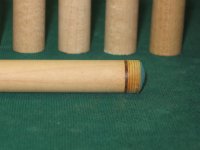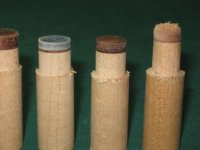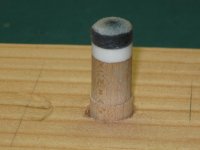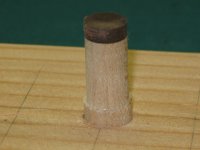I've seen some shafts without ferrules. First they looked strange, second after
thinking about it, I think it makes sense. I thought the ferrule was to protect the
shaft from splitting. But installing a ferrule with a tendon seems more likely to
cause a crack because if the glue separates then you only have a small tendon
to bend and break. With just a leather tip you have the whole shaft to support
the bending. IMO. I finally decided to do some experimenting and
seeing whether the tip will pop off the wood surface and I also install a phenolic
sheet between the tip and the wood. They seem to be quite solid. The hit feels
solid too.
Anyone one have any experience with this new configuration?
thinking about it, I think it makes sense. I thought the ferrule was to protect the
shaft from splitting. But installing a ferrule with a tendon seems more likely to
cause a crack because if the glue separates then you only have a small tendon
to bend and break. With just a leather tip you have the whole shaft to support
the bending. IMO. I finally decided to do some experimenting and
seeing whether the tip will pop off the wood surface and I also install a phenolic
sheet between the tip and the wood. They seem to be quite solid. The hit feels
solid too.
Anyone one have any experience with this new configuration?





